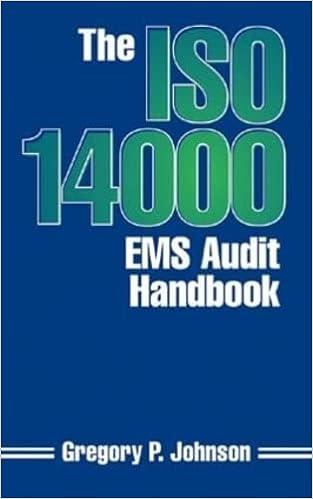Question
An entrepreneur, Susan, is investigating the possibility of going into business and you are assigned to help her prepare pro-forma financial statements. She is going
An entrepreneur, Susan, is investigating the possibility of going into business and you are assigned to help her prepare pro-forma financial statements.
She is going into a small retail business selling two products i.e. high quality sweaters and hats. The uniqueness of her products is that when a sweater or hat is purchased the customer can, using a computer, select or design the logo they wish installed and it will be installed immediately with a computerized sewing machine using a patented process.
The anticipated total sales for the launch in 2022 and the percentage sales increases for the following months are given below:
Jan 0
Feb. - Sweaters 500 units
- Hats 70 units
Mar. +40%
Apr. +15%
May. +5%
June +5%
July - Dec +3% each month
The percentage increases shown for March onwards are applicable to both product lines. The increases represent the increase over the previous months sales levels, NOT the increase from February sales level.
It is projected that sales will be made at the following average selling prices:
- Sweater $32.00 each
- Hats $18.00 each
It is anticipated that the average cost of sales per unit including logo will be:
- Sweaters $11.20 each
- Hats $7.20 each
Since it is anticipated that some sales will be made to companies and teams, credit will be provided on 50% of their sales. Collection on credit sales is anticipated to be 30 days on average.
The investment by the owners and the amount borrowed from rich relatives through a note payable are as follows, arranged in December of the prior year.
INVESTMENT NOTE PAYABLE
$10,000 $5,000
The note payable is interest only paid monthly at an annual rate of 5%.
They all decided to keep a minimum of $2,000 cash at all times starting in January in case of emergencies.
The business will have to pay prepaid rent equal to their first and last months rent. The term of their leases is 5 years. The rents is $1,000 per month
The shop is 500 square feet but because of different locations, and different clientele their furnishings, shelving, display cases will require different fixed asset purchases (leasehold improvements). The estimated costs are at $40 per sq ft.
The contractor will accept 50% of the payment in January with the balance due in February. Depreciation must be calculated. i.e. Leasehold Improvements should be written off over the life of the lease. All our entrepreneurs must purchase the computerized sewing machine for installing the logos at a cost of $4,500 prior to January. This equipment depreciates at a diminishing balance rate of 20% per yr.
Susan now has to look at inventory purchases. Their inventory stocking policy and the payment terms she has been able to negotiate with her suppliers are as follows:
- purchase inventory one-month prior to sale. Both their sweater and hat manufacturers will only agree to 100% C.O.D.
Also they will all have to purchase their opening inventories under the same terms. (i.e. January purchase for February sales)
The owner has come up with the following information regarding monthly expenses:
Salaries/mo. 2000
Insurance/mo. 150
Advertising/mo. 100
Municipal Taxes/mo. 85
Travel Expenses/mo. 60
Heat Light & Water/mo. 125
Accounting/mo. 115
The accounts illustrated in the Cash Flow Projection & Income Statement may have to be modified.
i.e. other accounts may have to be added, or some accounts may not be needed
REQUIRED:
- Complete the Sales & Cost of Sales by Productfor the company.
- Complete the Cash Flow Projection, Income Statement & Balance Sheet.
- What line of credit will have to be negotiated so that their cash balance during the first six months does not fall below $2,000. (from Cash Flow Projection)
- Calculate the following Financial Ratios:
- Gross Margin Ratio = Gross Profit/Sales
- Current ratio = Current assets/current liabilities
- Debt to equity ratio = total debt (total liabilities)/equity (net worth)
- Return On Investment = Income (before taxes but after interest)/net worth
- Inventory turnover ratio = Cost of goods sold/average inventory
(average inventory is beginning inventory + ending inventory divided by 2)
Compare your calculations with the industry Average.
Why might they be different?
Is there any action that Susan needs to take?
Template
Step by Step Solution
There are 3 Steps involved in it
Step: 1

Get Instant Access to Expert-Tailored Solutions
See step-by-step solutions with expert insights and AI powered tools for academic success
Step: 2

Step: 3

Ace Your Homework with AI
Get the answers you need in no time with our AI-driven, step-by-step assistance
Get Started


